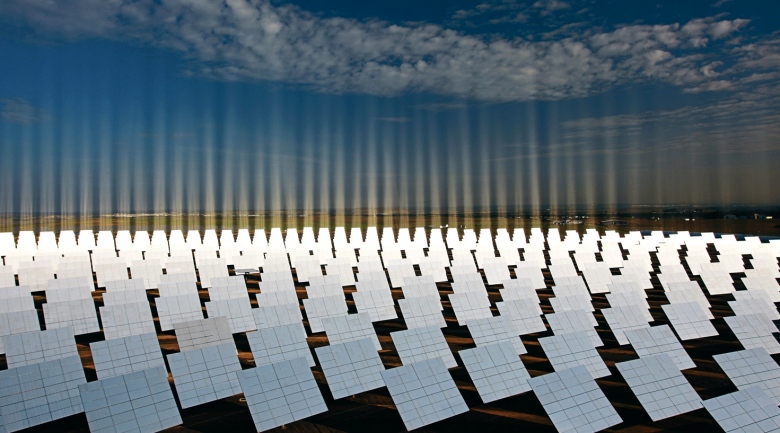
A recent report by British Petroleum (BP) found solar power generating capacity surged 73.3% last year. If you’re a dedicated fan of the singularity, statistics like that are reminiscent of Ray Kurzweil’s solar dictum—that solar power is on an exponential path, doubling every two years. To what end? A cheap, clean, and virtually boundless power source for humankind in two decades. Nothing major.
The report has some sunny stats for solar enthusiasts. Beyond that 73.3% global capacity jump in 2011 (a record since the data set’s 1996 inception), capacity ended the period at 63.4 gigawatts (GW), ten times greater than its level five years previously.
That’s pretty positive news. As Kurzweil notes, “We are awash in sunlight.” Just 1/10,000 of the sunlight falling on the Earth’s surface can satisfy humanity’s energy requirements. And that doesn’t imply a landscape littered with panels—in fact, an area equal to just a few percent of the Earth’s unused deserts would suffice.
After we’ve solved the energy puzzle, we can move on to other intractable issues, like insufficient food and water. Cheap energy means we can finally afford energy intensive processes like sea water desalination or hydroponic farming. See Kurzweil discuss solar power here (minute 06:15):
But let’s temper our enthusiam for a moment. Mark Twain said, “Facts are stubborn, but statistics are more pliable.”
What’s missing here? Scale, for one thing. Growth of 73.3% isn’t as significant if it’s from a tiny base to a less tiny base.
According to the US Energy Information Administration, renewable energy accounts for 12% of the US energy pie. Hydroelectric is top dog at 4.35% of US energy. Biomass contributes 3.15%, biofuels add 2.57%, wind accounts for 1.45%, and geothermal another 0.29%. Solar contributes just 0.15%. (Of course, those numbers vary country to country and globally—see here for a nice page of energy charts, with sources, from Columbia University.)
Solar capacity is capable of dramatic expansion rates right now, in part, because the technology is still a bit player in the renewable energy drama—and even more so on the larger non-renewable stage. That seemingly gangbusters 100% two-year growth rate would but nudge solar to a tie with geothermal at around 0.3% in the US.
You’ll see similarly stunning growth rates posted by start-up businesses early on. Going from $5,000 in profits to $8,665 doesn’t seem like a giant leap, yet it too is an example of 73.3% growth. The bigger the numbers get, however, the more difficult it is to stay the course. Going from $1 billion to $1.1 billion requires $100 million more in profits—yet is just 10% growth.
Still, Kurzweil thinks people too easily dismiss solar. Sure, it’s as yet a tiny percentage of total energy consumption (0.5% of the whole, he said in 2011), but that doesn’t matter when you’re talking about an information technology. And he thinks that’s just what solar is.
